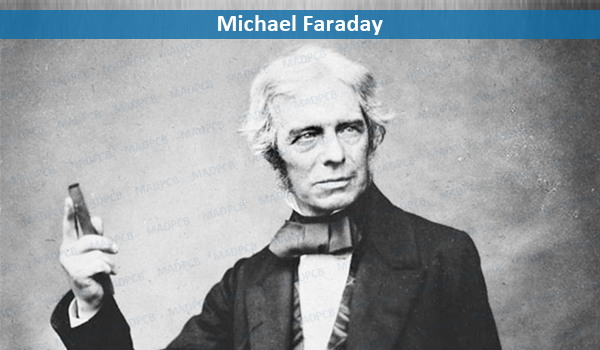What is a Farad?
The Farad (symbol: F) is the SI derived unit of electrical capacitance, the ability of a body to store an electrical charge. It is named after the English physicist Michael Farady (1791-1867). In SI base units 1F = 1Kg-1⋅m-2⋅s4⋅A2.

Michael Faraday
One farad is defined as the capacitance across which, when charged with one coulomb, there is a potential difference of one volt. Equally, one farad can be described as the capacitance which stores a one-coulomb charge across a potential difference of one volt.
The relationship between capacitance, charge, and potential difference is linear. For example, if the potential difference across a capacitor is halved, the quantity of charge stored by that capacitor will also be halved.
For most applications, the farad is an impractically large unit of capacitance. Most electrical and electronic applications are covered by the following SI prefixes:
- 1 mF (millifarad, one thousandth (10−3) of a farad) = 0.001 F = 1000 μF = 1000000 nF
- 1 μF (microfarad, one millionth (10−6) of a farad) = 0.000 001 F = 1000 nF = 1000000 pF
- 1 nF (nanofarad, one billionth (10−9) of a farad) = 0.000 000 001 F = 0.001 μF = 1000 pF
- 1 pF (picofarad, one trillionth (10−12) of a farad) = 0.000 000 000 001 F = 0.001 nF
Units of measurement that include the farad are called the SI units, which are metric-based. Basic SI units include the meter, the kilogram and the second. Other units used in this system include the joule for energy and work, the ohm for resistance, the newton for force and the henry for inductance. Along with the farad, all these electrical quantities are used in important mathematical expressions. It is impossible to discuss what a farad is without discussing the nature of and applications for the capacitor.
A parallel-plate capacitor is the simplest design to illustrate the basic parameters of capacitance. This property relates directly to the surface area of the plates and is inversely proportional to the distance between those plates. Proportionality depends upon the medium between the plates and a quality it possesses called “permittivity,” which is the measure of resistance to an electric field that the material between the plates supports or permits.
The mathematical relationship is C=kε0A/d. In this equation, the permittivity of space is “ε0” which equals 8.854*10-12 farads/meter. The plates’ area in square meters is represented by “A” and “d” is the number of meters between them. Constant k is the relative permittivity of the actual material between the plates, whether it is air, a ceramic, oil or some other substance. As an example, if a parallel-plate capacitor has plates with an area of 1 square meter each, and the distance between them is 0.001 meters, and the permittivity, k, is 1.07, then the capacitance is 9,474 picofarads.
Applications for capacitors include direct current blockage, signal filtration, for electrical discharge, to limit transient magnitude and to couple two circuits. For this last application, capacitors may be used in conjunction with coils to set up a specific inductance. This is called an LC circuit, sometimes a tuned or resonant circuit, and when combined with a resistance or impedance, it is called an “RLC” circuit. It limits signal transfer from a more complex signal to a particular frequency. Such circuits are used in television reception.
